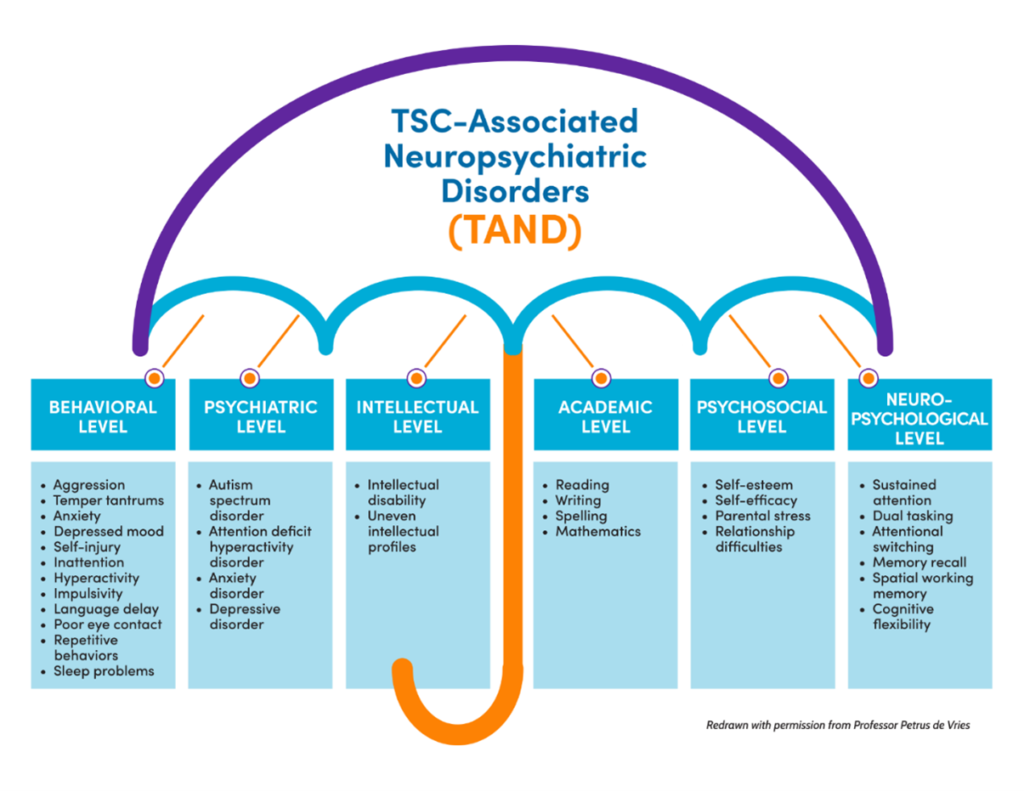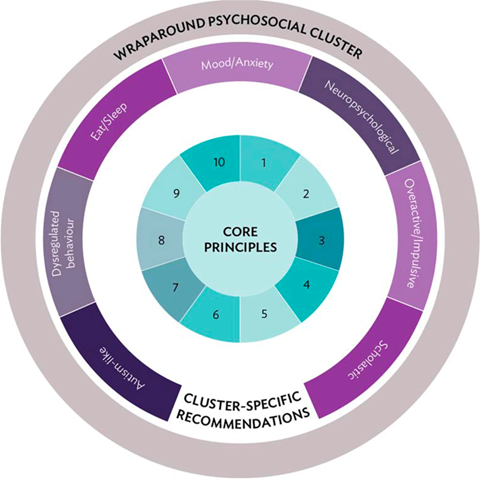
Apart from the physical manifestations of tuberous sclerosis complex (TSC), most people with TSC are affected by a broad range of behavioral, psychiatric, intellectual, academic, neuropsychological and psychosocial difficulties. Examples include autism, ADHD, intellectual disability, anxiety and depressive disorders, and difficulties in scholastic skills. These problems often cause the greatest burden to individuals with TSC and their families.
The Neuropsychiatry Panel of the International TSC Consensus Conference in 2012 realized there was a big gap in the identification and treatment of these difficulties. To reduce this ‘identification gap’ they created the term ‘TAND,’ which stands for TSC-associated neuropsychiatric disorders.
The TAND Consortium and TANDem Project
The TAND Consortium is an international group of TSC experts including researchers, clinicians and TSC family representatives. TANDem is an international multi-disciplinary mobile-health project to empower families and individuals who live with TSC around the world. In 2023, the consortium published International consensus recommendations for the identification and treatment of tuberous sclerosis complex-associated neuropsychiatric disorders (TAND) in the Journal of Neurodevelopmental Disorders.
They used a systematic procedure including evidence review and consensus-building to generate these recommendations. They consist of ten core principles relevant to anyone with TSC, as well as recommendations specific to each TAND cluster detailed below. The overarching recommendation is to ‘screen’ for TAND at least annually using the TAND Checklist, to ‘act’ using appropriate next steps for evaluation and treatment, and to ‘repeat’ the process to ensure early identification and early intervention with the most appropriate available support, including behavioral interventions and supports, psychological support, and medications if necessary.

Figure redrawn from de Vries et al., JNDD 2023 with permission from the authors.
Core principles for the identification and treatment of TAND
- Everyone with TSC is at risk of TAND.
- Therefore, everyone with TSC needs lifelong monitoring for the emergence of TAND.
- Screen for TAND at least annually and follow up with appropriate action.
- The goal is early identification and early intervention, rather than a “watch and wait” approach.
- TAND clusters cluster together and the presence of one should alert families and teams to explore others.
- Always consider the impact of physical health problems and medications for physical health problems on TAND.
- Clinicians should work with families and caregivers as lived experts in TSC and TAND, especially considering the lack of research evidence of TAND in TSC.
- A whole system plan including biological, psychological and social aspects should be used to understand needs and provide interventions and support.
- Evidence-informed assessment and interventions should be used from TSC studies or the general population in the absence of TSC-specific evidence.
- The goal of TAND support is to help everyone living with TSC achieve an optimal quality of life as individuals and as families, and to facilitate their active participation in all aspects of society throughout their journey with TSC and TAND.
The TAND Checklist
The TAND Checklist was developed to help clinical teams, individuals with TSC and their families screen for TAND and prioritize what to do next. Experts at the 2012 TSC Clinical Consensus Conference recommended all individuals be screened for TAND upon diagnosis and at least annually. More detailed evaluations should follow from screening. Every individual with TSC should also have a comprehensive formal evaluation at key developmental timepoints (i.e., infancy, toddler, pre-school, early school years, middle school years, adolescence, adulthood).
The checklist is available to download in 19 different languages on the TAND Consortium website.
TAND clusters and recommendations
While TSC impacts everyone differently, research analyzing TAND Checklist data identified seven natural clusters of TAND manifestations, as well as a wraparound psychosocial cluster. As stated above in the core principles, TAND clusters cluster together and the presence of one should alert families and teams to explore others.
Click the clusters below to learn more about each cluster and the consensus recommendations for identification and treatment.
Ultimately, those with TSC are not defined by their challenges, difficulties and disabilities. Each person with TSC brings their own skills, talents, and personality that brings great pleasures, enrichment and meaning to the lives of those around them.
For those who are looking for therapists in your area and are unsure of who to contact you can look up your area on the National BCBA therapist website.
Reviewed by Ashley Pounders, MSN, FNP-C, November 2023.








